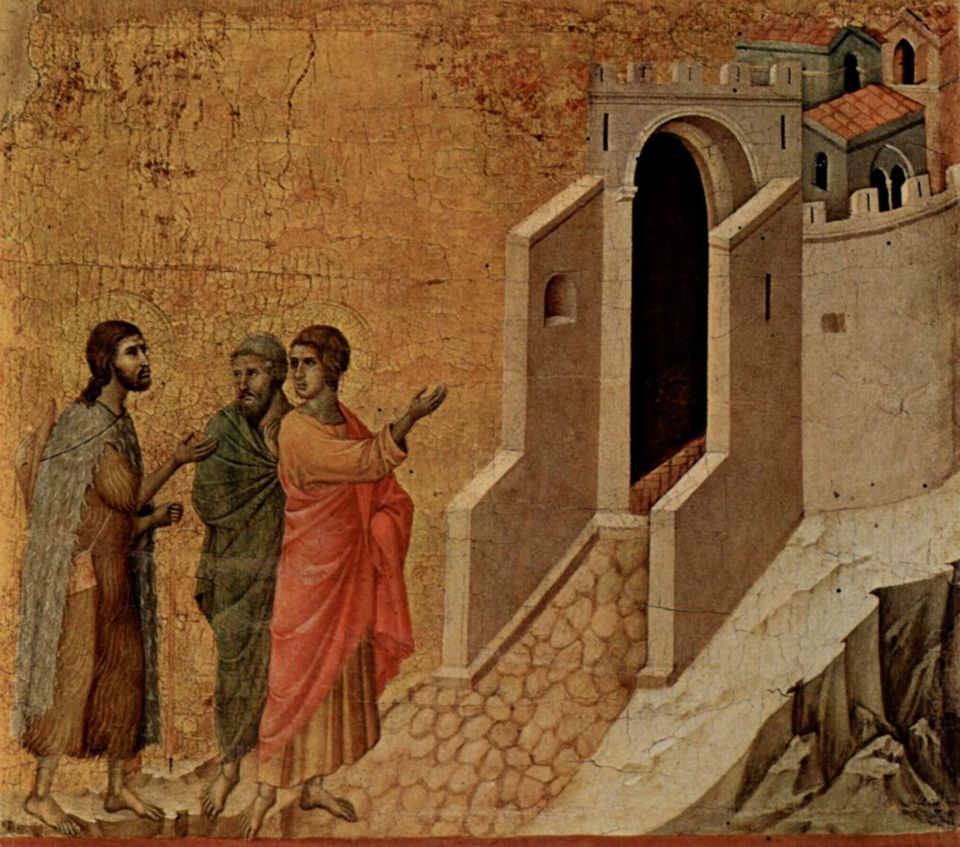The Seven Mile Story

Who is God?
Who was Jesus?
Why is life so amazing? So tragic?
Where did we come from, and where are we going?
What is the meaning of it all?
These are some of the questions that we pray you will wrestle with as you work through this little study.
Early Jesus followers were convinced that the most important answers to the big questions of life were found within the ancient Jewish sacred texts. They believed that within the thousands pages across the 40 or so different books that made up the Hebrew Scriptures, there was a single story. A story about God, a story about us, really a story about everything. A story that was certainly not always front and center throughout the varied literary genres, historical settings, and even languages, but a single grand story. Like a single thread woven through a cloth, holding it all together while almost invisible if you aren't looking for it. The early Christians had a name for this story – The Gospel. A word that means "Good News".
The Gospel, as Jesus taught it, was so life changing and so incredible that many of these early students of Jesus ended up dedicating their entire lives to communicating this message to anyone who would listen. They said that their Rabbi Jesus was the one who taught them this story and that so many had missed the whole point of the Hebrew Scriptures because they had missed the story that tied it all together! Unsurprisingly, the religious establishments of the day did not appreciate this. Many saw the ancient texts as primarily rules to be adhered to. Some saw these texts as mystical writings to be encountered existentially, with myriad meanings and intentions only limited by the number of readers. And still, others saw these texts and their story as subversive and dangerous to the imperial religious power that could threaten the empire's peace and cohesion.
In those early days, religious and civil powers made a serious effort to silence this strange new teaching. Still, for almost three hundred years, the message continued to spread everywhere that people were found. And wherever it spread, people changed in radical ways. Entrenched social norms of segregation between ethnicities and socioeconomic status eroded wherever this story went. The marginalized were brought in. Deep bonds of family-like community were formed between the most unlikely members. And seemingly against all odds, this initially underground and obscure movement slowly became one of the world’s major religions.
2,000 years later and this religion has not only survived, but is continuing to thrive and expand rapidly in many parts of the world. This story has captured the hearts and imaginations of people from so many different cultures. Over the centuries, Christianity and its adherents have contributed enormously to the world in human rights, healthcare, government, education, art, science, philosophy, and more. But the history of this religion is certainly not spotless! Christianity has its share of scandal, bigotry and hatred, violence, abuse of power, hypocrisy, and ignorance. How do we understand this paradox?
In the West, most of us have an idea of what Christianity is; we have heard of the Bible and Jesus. Most of us have at least a vague concept of what a Church is. But two thousand years is a long time, and the Christianity of Jesus and the Apostles looked quite different from the Christianity we often find in our cultures.
Every generation has the responsibility to engage in re-formation. This means both paying attention to the rich history of the tradition and not blindly receiving everything at face value. The goal of this particular resource is to begin that work at the central point of what Christianity is all about, The Gospel. To understand what the purpose of the Bible is. And to learn about the life of the most compelling teacher to ever walk this earth, Jesus of Nazareth.
How to use this resource
While this material can be worked through by an individual, it was compiled it with community and discussion in mind. Spiritual conversation among community is where significant learning often occurs, not so much top-down lectures. Not to mention that community is an essential theme throughout the story. It's a common experience that even people who are quite familiar with the story learn new and deeper things when listening to others wrestle through it with their own perspectives and questions. So reach out to a friend or three and see what God might do!
The recommended approach is to take a lesson at a time, read through it , note your reflections, and then gather to discuss. We have provided some questions in each lesson to serve that goal, but often just letting the conversation meander where it needs to is the best approach. The most important part of this resource is the references to the sacred texts themselves, so be flexible and let whatever conversations most naturally flow from the given text just happen. There are also collected resources for spending more time in either study or contemplation following a discussion.
We pray this little work proves to be a helpful guide as you encounter the greatest story ever told in the pages of Scripture.
– The Neighborhood
The grass withers, the flower fades,
but the word of our God will stand forever.
Isaiah 40:8 (ESV)
